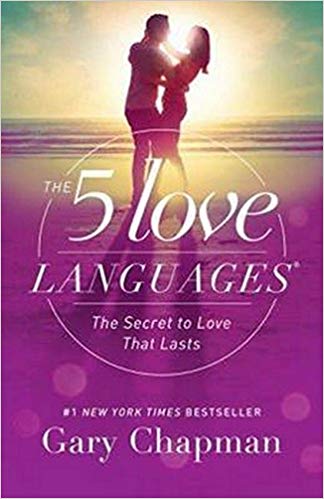

This article is an excerpt from the Shortform summary of "The 5 Love Languages" by Gary Chapman. Shortform has the world's best summaries of books you should be reading.
Like this article? Sign up for a free trial here .
We know how deep our love is, but we often struggle to know how to express love. What are the best ways to truly demonstrate how much we care? What are the 5 Love Languages?
Use the strategies developed by Gary Chapman and introduced in The 5 Love Languages: The Secret to Love that Lasts to learn how to express love and, in doing so, create a deeper emotional connection in your relationship.
Express Love Using the 5 Love Languages
If you want to know how to express love, you need to know what type of “love language” your partner (or any intended receiver of your love) speaks.
The Five Love Languages are the way you experience and show love. There are 5 love languages: Word of Affirmation, Quality Time, Receiving Gifts, Acts of Service, and Physical Touch. Learning to speak your partner’s love language can help you understand how to express love. And learning your own love language helps you understand what makes you fulfilled in a relationship.
The 5 Love Languages
Love Language 1: Words of Affirmation
Words of Affirmation are words or phrases you say to your partner to make them feel good about who they are and what they do. These words can be compliments, words of encouragement, remarks that express kindness, or those that signify your faith in them. This is how to express love if your partner appreciates verbal appreciation.
- For the person whose love language is Words of Affirmation, a compliment about their appearance or what they do for the family will fill their tank.
- Telling your partner you appreciate them in your life will make them feel loved.
- Supporting their hopes and dreams by saying, “I believe in you” or “You’re so talented, you can do whatever you want,” will bolster them and give them courage.
- Asking for their help in a way that stresses their skills or the benefit it would bring to your life can make them feel trusted and appreciated.
Love Language 2: Quality Time
Quality Time is time dedicated solely for the purpose of being with your partner without distractions. A person with this love language wants to simply be with their loved one.
The activity is secondary to the actual act of being together. Time may mean actively engaging in meaningful conversation, participating in an activity that they like, even if you don’t, or having dinner together without watching TV or using electronic devices. This is how to express love if your partner feels most loved just being with you.
- An evening walk together, whether talking or not, can make your partner feel loved.
- Taking a cooking class or biking together can express a willingness to be with your partner, which translates into a full tank.
- Listening to your partner talk about their day and asking questions to understand how they feel will let them know you care and are willing to be there for them.
- Talking about your past or fears with your partner will tell them you want them to be part of your life completely.
Love Language 3: Receiving Gifts
Receiving Gifts represents the act of giving a gift as a symbol of love. A gift equates to thought, and to a person with this love language, that thought is felt as love.
For people who speak this of the five love languages, the type of gift is less important than the effort to procure it and the desire to give it. This is how to express love if your partner enjoys getting presents.
- A small present brought back from a business trip makes your partner feel special because you were thinking of them.
- A diamond bracelet will elicit the same response as a crocheted scarf. The feeling will still be of being loved enough to receive something from you.
- Sometimes, your mere presence is the gift your partner needs.
- If they are in crisis, being there as a shoulder, sounding board, or comforting presence is enough to represent your love for them.
- Prioritizing a request for your presence over work or previous plans shows them how much their feelings matter.
Love Language 4: Acts of Service
Acts of Service are things done to make life easier for your partner. Whether you act to remove a burden from their life, help out, or provide space for them to do something else, these acts of service will tell a partner with this language that they and their time are respected. This is how to express love if your partner feels loved when you assist her.
- Not all acts are created equal. Understanding which acts will serve your partner best means understanding their life enough to know how to help and their expectations enough to know what they want done for them.
- If your partner frequently complains about a certain task at home, pitching in to remove that task from their day is an act of love.
- If you know your partner hates walking the dog at night, taking over that duty will fill their tank.
- If your partner wants more time to themselves, taking the kids out one night a week will speak volumes of love.
Love Language 5: Physical Touch
Physical Touch signifies a person who feels love most through intimate contact. Touches can be large or small and intimate or casual. The most important thing to learn about a partner who speaks this language is their specific preference for touch. This is how to express love if your partner values positive touch.
- A hand on the shoulder may be desired more than a kiss on the neck.
- Physical intimacy may express love more than holding hands, or vice versa.
- Touching someone in a way they don’t like is a negative touch, a violation, or abuse.
- This action does not communicate love.
- There are endless ways of expressing love through touch.
- Have fun learning what sort of touches your partner likes.
How to Express Love by Filling the Love Tank
Now that you know what the five love languages are, you need to figure out how best to express it.
You and your partner are different, even if you have been together for a long time. As individuals, you bring your histories and baggage into your relationship. You have expectations for what you want or should receive from your partner. You have different ways of coping with anger and pain. You have different priorities.
When your love tank is full, you can meet your partner in a positive place to deal with your differences. With a full love tank, you are able to communicate better and appreciate each other.
With empty love tanks, the differences can turn to distance and resentment. An empty love tank can remove the desire to treat your partner with respect and compromise.
———End of Preview———

Like what you just read? Read the rest of the world's best summary of "The 5 Love Languages" at Shortform . Learn the book's critical concepts in 20 minutes or less .
Here's what you'll find in our full The 5 Love Languages summary :
- How to figure out what your love language is, and what your partner's is
- Why arguments happen in relationships, and how to stop them
- How to speak the right love language, even if it's not yours







Love this! 💖 The 5 love languages are such an eye-opener. It’s amazing how understanding these can improve relationships. Thanks for breaking it down so clearly! 😊”